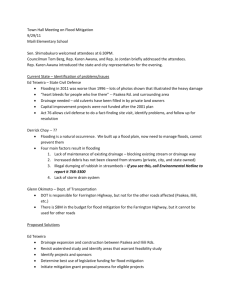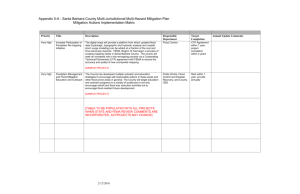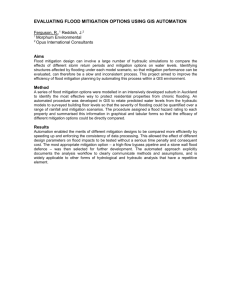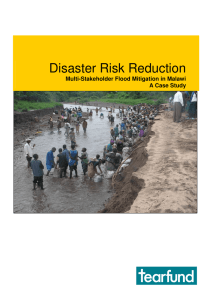GenericFloodRiskMgmt-SilverJacketsTeamCharter16March2011
advertisement
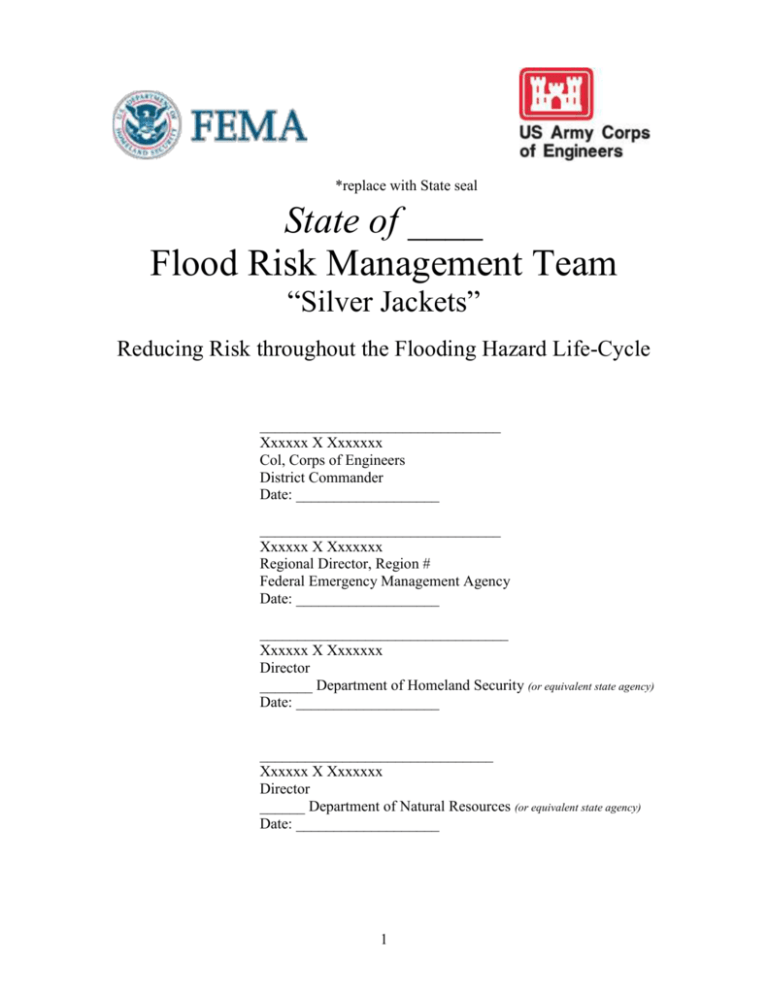
*replace with State seal State of ____ Flood Risk Management Team “Silver Jackets” Reducing Risk throughout the Flooding Hazard Life-Cycle ________________________________ Xxxxxx X Xxxxxxx Col, Corps of Engineers District Commander Date: ___________________ ________________________________ Xxxxxx X Xxxxxxx Regional Director, Region # Federal Emergency Management Agency Date: ___________________ _________________________________ Xxxxxx X Xxxxxxx Director _______ Department of Homeland Security (or equivalent state agency) Date: ___________________ _______________________________ Xxxxxx X Xxxxxxx Director ______ Department of Natural Resources (or equivalent state agency) Date: ___________________ 1 State of ______ FLOOD RISK MANAGEMENT TEAM CHARTER This charter establishes and formalizes the expectations for implementation of the Flood Risk Management Team for the State of ______. A review of this charter will be conducted annually, or at any time, with the consent of the core member agencies. For the purposes of this document, the following definitions will be used: Mitigation is the effort to reduce loss of life and property by lessening the impact of disasters. Risk is defined as the product of the probability of a flooding event and the consequences of the flooding event. Life-cycle denotes all phases of the flooding emergency: preparation, response, recovery and mitigation. The intent is to integrate mitigation into all phases. Vision Statement: Establish and strengthen intergovernmental partnerships at the state level as a catalyst in developing comprehensive and sustainable solutions to state flood hazard challenges. Mission Statement: Through an interagency team of State and Federal agencies a collaborative process will: • • • • • • • • Facilitate strategic, integrated life-cycle mitigation actions to reduce the threat, vulnerability and consequences of flooding in the state of ____; Create or supplement a mechanism to collaboratively solve issues and implement or recommend solutions; Foster leveraging of available resources and information between agencies; Increase and improve flood risk communication and outreach, Promote wise stewardship of the taxpayers’ investments, Develop a more comprehensive regional flood risk management strategy through participation in the Regional Interagency Flood Risk Management Team, Inform the U.S. Army Corps of Engineers District Commander during response and recovery activities, and Integrate mitigation into recovery actions. Goals: 1. Ensure continuous pre- and post-disaster collaboration. 2. Provide a forum for examining all types of solutions for flood risk management, including non-structural solutions. 3. Learn about programs, identifying limitations and opportunities, and combine programs to create integrated, comprehensive and sustainable solutions. 4. Create a multi-agency technical resource for state and local agencies. 2 5. Provide assistance in implementing high priority actions identified in states’ hazard mitigation plans. 6. Improve flood risk outreach by presenting a unified interagency message to better educate and advise mutual customers as a result of gaining familiarity with each agency’s missions, processes and programs. 7. Improve internal and external risk communication, including increased awareness of residual risk. 8. Identify and facilitate improvements to existing programs, policies and processes. 9. Identify other collaboration opportunities to combine resources and identify gaps; minimize duplication of effort and ensure consistency. 10. Catalog and share information on past and future projects and initiatives. 11. Prioritize current and future initiatives individually and collectively. Roles & Responsibilities: The team will be led by the state of ______. Membership will vary based on available resources and team focus; however, the core member agencies involved at all times will include the U.S. Army Corps of Engineers (USACE), the Federal Emergency Management Agency (FEMA), the State of ___ Department of Natural Resources (XDNR), and the State of ____ Department of Homeland Security (XDHS). Representatives may be from the regional and state levels of the organizations. As the team priorities evolve, other State, Federal and local agencies may choose to participate in this initiative. Examples of such Federal agencies are the U.S. Geological Survey, the Natural Resources Conservation Service, the Federal Energy Regulatory Commission, the National Oceanic and Atmospheric Administration/National Weather Service, and the Economic Development Administration. The state may choose to invite non-governmental representatives. All participating agencies will contribute experience and information to team efforts. At the request of the state, the USACE representative may support the team, including maintaining and distributing a contact sheet, organizing, coordinating and facilitating team meetings, and recording and maintaining final meeting minutes. . Meetings: At a minimum, meetings will be conducted on a quarterly basis under Roberts Rules of Order. Coordination between meetings may occur through email and teleconferencing. Meeting agendas shall be published at least one week prior to a meeting. Draft minutes shall be distributed via email for comment. Final minutes shall be distributed to all members and posted on a public website (www.xxxxx.xxx). A Silver Jackets website is being developed, though teams may choose to post minutes to any agency’s website. Decision Making: Decisions will be accomplished through team consensus after discussion. If a decision cannot be reached through consensus, the secondary method will be _________. The core member agencies that should be involved in all major decisions are USACE, FEMA, XDNR, and XDHS. 3


